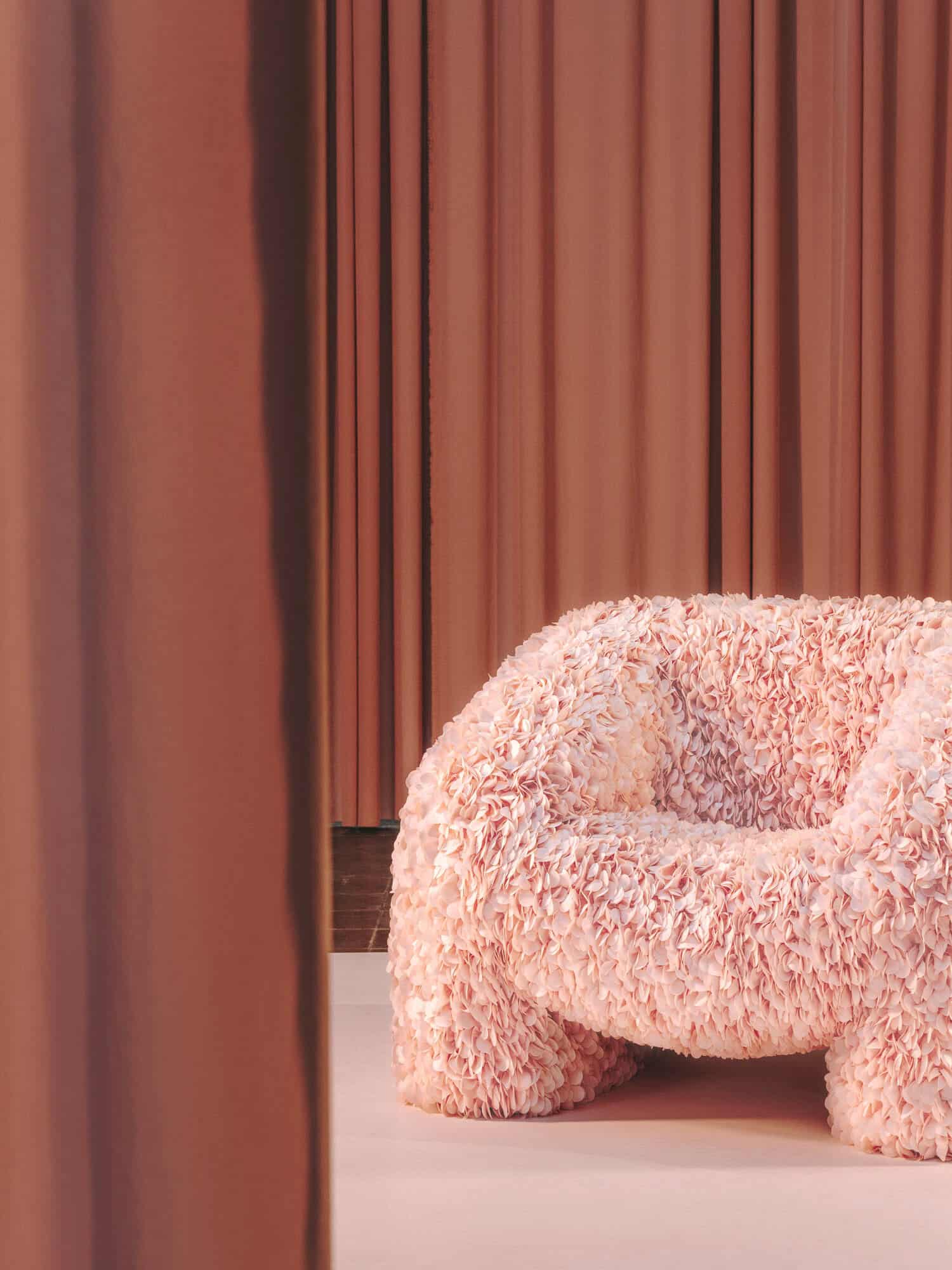The aesthetic tendencies of our time call for design that transcends the boundary between the imagined and the concrete – objects imbued with an ethereal quality. In the chasm between the envisioned and the real, the signifiers of a new era emerge. Here and now, Andrés Reisinger’s Hortensia Chair exemplifies the possibilities of our digital present. The coalescence of color, shape, texture, and tone evoked for the petals of the Hydrangea flower (also known the Hortensia), which Reisinger rendered in an image of a pale pink armchair, plush in its apparent tactility.


As is typical of Reisinger’s work, the Hortensia Chair began as a series of digital experiments—explorations of the qualities that give CGI textures a tangible, familiar feeling.
The aesthetic tendencies of our time call for design that transcends the boundary between the imagined and the concrete – objects imbued with an ethereal quality. In the chasm between the envisioned and the real, the signifiers of a new era emerge. Here and now, Andrés Reisinger’s Hortensia Chair exemplifies the possibilities of our digital present. The coalescence of color, shape, texture, and tone evoked for the petals of the Hydrangea flower (also known the Hortensia), which Reisinger rendered in an image of a pale pink armchair, plush in its apparent tactility.
The archetype of eye-catching, the image went viral on Instagram, prompting the placement of three orders—for a chair that did not yet exist. In response to the interest, Reisinger sought a producer with whom he could work to bring the chair into being, to no avail. His six-month pursuit for a manufacturing partner was met with the same recurring response: due to the complex textile structure and unusual form of the design, it would be impossible to create.

Reisinger personally put together his own team to realize his digital vision, starting with Júlia Esqué, a product designer focused on textile design. Beginning with sketches and paper models, the design process sought to create a system based on petals that could then, be reproduced with a surface looking and feeling as natural as its counterpart. The succession of prototypes resulted in a series of individually laser-cut polyester modules that are subsequently manufactured.
Thousands upon thousands of these modules cluster together to create the unique petal system that swathes the foam base fabric of the chair’s broad wooden base in supple petals. Imbued with a sense of randomness and lightness, the petal system found an organic form, as lush as the head of a hydrangea in full bloom. The objet d’art that once only existed as pixels in the confines of the screen now waits to be touched, leaned back into, reveled in.







